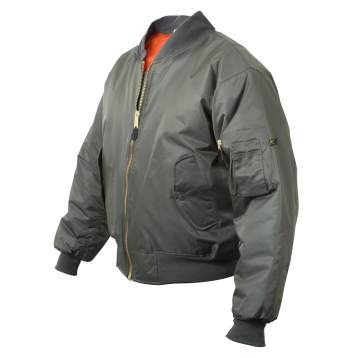
Alpha Industries MA-1 Bomber Flight Jacket - Fighter Pilot Flight Jacket - Sage, 2XS at Amazon Men's Clothing store: Windbreaker Jackets

Saucezhan Ma1 Bomber Jacket Winter Jacket Men Replica Of Ma-1 Flight Jacket Wool Jacket Water Proof Cold Protection Wind Proof - Jackets - AliExpress

Ma1 Men Winter Warm Military Airborne Flight Tactical Bomber Jacket Army Air Force Fly Pilot Jacket Aviator Motorcycle Down Coat - Hunting Coats & Jackets - AliExpress

























